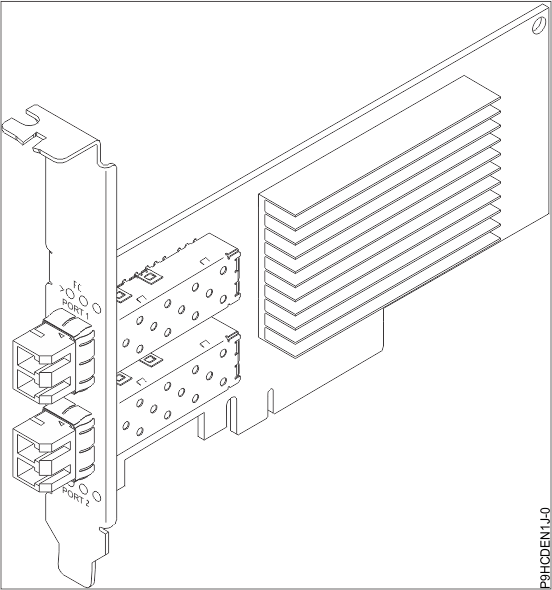PCIe4 x8 2-port Fibre Channel (32 Gb/s); (FC EN1J and EN1K; CCIN 579C)
Learn about the specifications and operating system requirements for feature code (FC) EN1J and EN1K adapters.
Overview
FC EN1J and EN1K are electronically identical. FC EN1J is a full-height adapter and FC EN1K is a low-profile adapter. The physical difference is that EN1J has a tail stock for full height PCIe slots and EN1K has a short tail stock for low profile PCIe slots. Both feature codes have the same CCIN 579C.
The PCIe Gen4 32 Gigabit two port optical Fibre Channel (FC) adapter is a high-performance x8 short form adapter. The adapter provides two ports of 32 Gb Fibre Channel capability by using SR optics. Each port can provide up to 6,400 MBps bandwidth per port. Each port provides single initiator capability over a fibre link or with NPIV, multiple initiator capabilities is provided. The adapter includes 32 Gb SR optical transceivers that are installed. The ports have LC type connectors and use shortwave laser optics. The adapter operates at link speeds of 8, 16, and 32 Gbps and automatically negotiates to the highest speed possible. The adapter can be started on IBM Power Systems with FCode.

Specifications
- Item
- Description
- Adapter FRU number
- 02CM909
- I/O bus architecture
- PCIe4 x8.
- Slot requirement
- For details about slot priorities, maximums, and placement rules, see PCIe adapter placement rules and slot priorities and select the system you are working on.
- Voltage
- 3.3 V, 12 V.
- Form factor
- Short, low-profile.
- Maximum number
- For details about the maximum number of adapters that are supported, see Adapter placement rules and slot priorities and select the system you are working on.
- Attributes provided
- 32 Gb/s of throughput.
Operating system or partition requirements
- The latest version of enabling libraries and utilities can be downloaded from the Fix Central website.
- Power Systems Prerequisites website.
- IBM System Storage Interoperation Center (SSIC) website.
- The latest version of the device driver or IBM® Power® RAID adapter utilities (iprutils) can be downloaded from the IBM Service and Productivity Tools website.
- For information about important notices for Linux on IBM Power Systems, see the Linux® on IBM website.